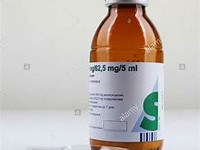Co amoxiclav
CLINICAL USE
Antibacterial agent
DOSE IN NORMAL RENAL FUNCTION
IV: 1.2 g every 8 hours (increasing to every 6 hours in severe infections) Oral: 375–625 mg 3 times daily
PHARMACOKINETICS
DOSE IN RENAL IMPAIRMENT
GFR (mL/MIN)
30–50 Dose as in normal renal function 10–30 IV: 1.2 g every 12 hours Oral: Dose as in normal renal function
DOSE IN PATIENTS UNDERGOING RENAL REPLACEMENT THERAPIES
IMPORTANT DRUG INTERACTIONS
Potentially hazardous interactions with other drugsAnticoagulants: effects of coumarins are potentially enhancedOral contraceptives: potentially reduced efficacyMethotrexate: reduced excretion thereby increasing risk of toxicity
ADMINISTRATION
Reconstition
600 mg with 10 mL water for injection; 1.2 g with 20 mL water for injection
Route
Oral, IV
Rate of Administration
IV bolus: over 3–4 minutes Infusion: infuse over 30–40 minutes in 50–100 mL sodium chloride 0.9%
Comments
IV preparation is less stable in infusion solutions containing glucose, dextran or bicarbonate. May be injected into drip tubing over period of 3–4 minutesDo not mix with aminoglycosides
OTHER INFORMATION
CSM has advised that cholestatic jaundice may occur if treatment exceeds a period of 14 days or up to 6 weeks after treatment has been stopped. The incidence of cholestatic jaundice occurring with co-amoxiclav is higher in males than in females, and prevalent particularly in men over the age of 65 yearsThe probability of co-amoxiclav associated cholestatic jaundice is 6 times more common than with amoxicillin, and with higher doses of clavulanic acidEach 1.2 g vial contains: sodium 2.7 mmol, potassium 1 mmol
